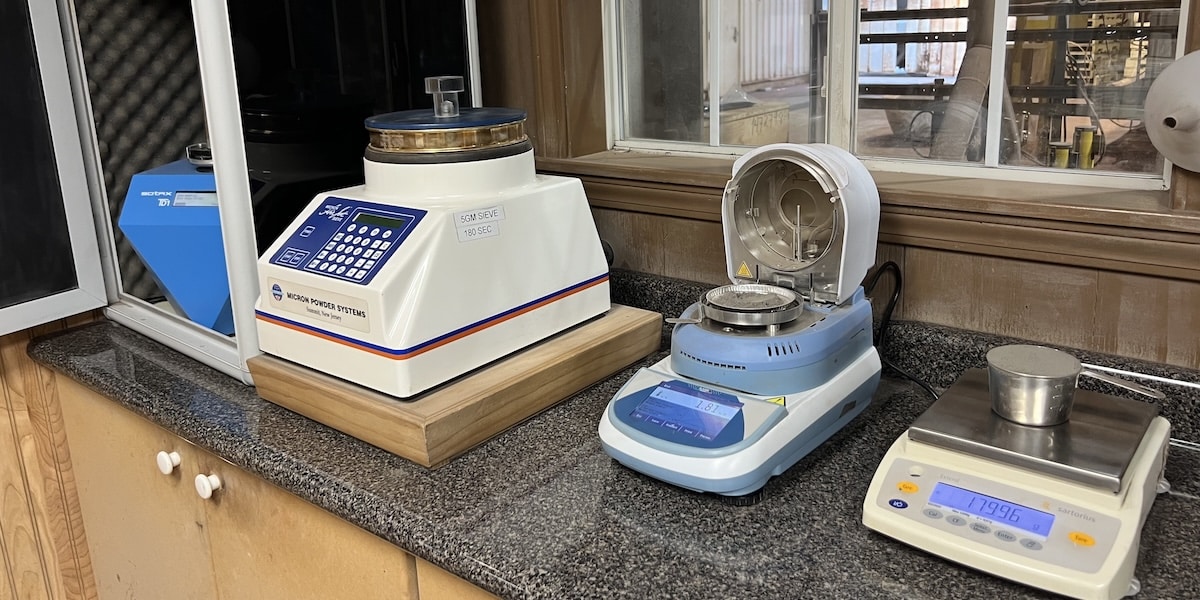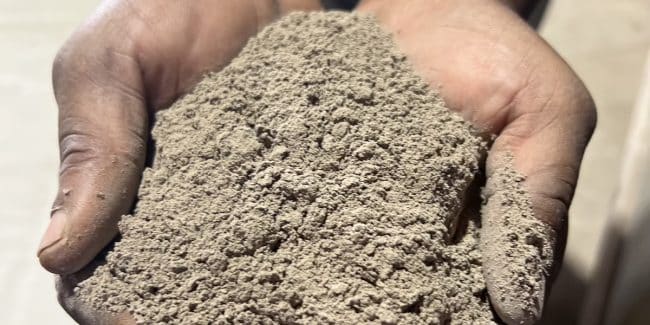
Bulk Density Formula: How to Calculate the Bulk Density of Materials
In milling and material processing, bulk density is one of the first characteristics assessed when handling powders, grains, or granules. It influences how material flows through equipment, how it behaves during blending, and how much space is required for packaging and storage.
What is Bulk Density?
Bulk density is the weight of a material divided by the total volume it occupies, including void spaces between particles.
Fine powders often show lower bulk density due to more void space. Granules or pellets pack closer together and typically have higher bulk density values. For anyone working with material storage or blending, this difference can affect how a process is designed.
True density vs. bulk density: True density refers to the density of the solid material without air spaces. Bulk density includes the spaces between particles, which is why values are usually lower than true density.
Particle density vs. bulk density: Particle density is sometimes used interchangeably with true density, but generally it describes the density of the individual particles themselves. Bulk density looks at the bulk sample, including the way particles pack and the voids between them.
Bulk density varies not only between different materials but also within the same material batch, depending on moisture, particle size, shape, and how the material has been handled or compacted.
The Bulk Density Formula
Bulk Density = Weight of Material ÷ Volume Occupied
Where:
- Weight = measured sample weight (ounces or pounds)
- Volume = measured occupied space, including voids (cubic inches, quarts, gallons, or cubic feet)
Units:
- lb/ft³ (pounds per cubic foot)
- oz/in³ (ounces per cubic inch)
Conversion: g/cm³ × 62.428 = lb/ft³
Metric units are sometimes used in lab settings, but in field work and packaging, pounds per cubic foot is the most practical reference.
How to Calculate Bulk Density
- Measure the weight: Weigh a representative sample using a scale.
Example: 1.1 lb of powder.
- Measure the volume: Place the material in a container of known volume.
Example: Powder fills 0.9 quarts, which equals 0.03 cubic feet.
- Apply the formula:
Bulk Density = 1.1 lb ÷ 0.03 ft³ = 36.7 lb/ft³
Result: The bulk density for this sample is 36.7 lb/ft³.
M&M Advice: Always use a representative sample. Non-uniform material will give misleading results if only a small portion is tested.
Typical Bulk Density Values for Common Materials
Here are approximate bulk density values for several common bulk materials. Actual numbers vary by moisture, particle size, and handling method, so these ranges should be treated as general reference points.
| Material | Bulk Density (lb/ft³) |
| Limestone (ground) | 85-95 |
| Portland cement | 75-85 |
| Bentonite clay | 50-60 |
| Granulated sugar | 50-55 |
| Wheat flour | 30-40 |
| Plastic pellets | 35-40 |
| Wood chips | 15-25 |
| Activated carbon | 28-33 |
These values highlight the wide spread between different products. A dense mineral may weigh over 100 lb/ft³, while a lightweight organic product can be under 20 lb/ft³. Always verify the actual density of your material before making storage or shipping plans.
What Changes the Density of Materials?
- Particle size: Smaller particles can reduce bulk density because of increased void space.
- Particle shape: Spherical particles tend to pack efficiently and produce higher, more consistent bulk densities. Angular, elongated, or needle-like particles trap void space and lower density. Mixed shapes in the same batch can compact differently under vibration, sometimes increasing density beyond what size alone predicts.
- Moisture content: Even slight moisture can cause clumping, changing volume and flow properties.
- Compaction method: Material poured loosely will have lower bulk density than material vibrated or tamped into place.
- Material type: Powders, pellets, and flakes behave differently in bulk.
These are the most common factors, but there are many other variables at play such as electrostatic charge, temperature, or blending sequence. You can see how the density of materials is never constant, which is why it is always measured before processing.
Technicians often compare loose density (material poured without vibration) against tapped density (after vibration or settling). The gap between the two values shows how much compaction to expect in storage, transport, or dosing. Designing a hopper or conveyor on loose density alone can lead to overflows or inconsistent flow, while sizing only for tapped density can waste capacity.
M&M Advice: measure both loose and tapped density, document the conditions of the test, and update values regularly if feedstocks change. Building in a margin of 10-20% during equipment design helps prevent overloads and flow issues.

How Bulk Density Shows Up in Day-to-Day Work
You probably did not know how many parts of the process are influenced by something as simple as weight per cubic foot. Bulk density affects how your material moves, how much space you need, and how products are packaged and shipped.
Knowing bulk density helps with:
- Flowability through hoppers/feeders/conveyors
- Storage calculations for silos/totes/bags
- Packaging accuracy when filling drums/bulk bags
- Transport planning by determining load weights per container
At M&M Milling, bulk density is always evaluated before designing a powder milling, blending, or packaging solution. The wrong assumptions can cause blockages in equipment or inaccurate fills, so verifying density at the start is part of our routine process.
FAQs on Bulk Density
Q: How much material should I sample?
A: Small scoop samples can give a quick estimate, but larger amounts (pounds rather than ounces) provide more representative results.
Q: Can bulk density change during shipping?
A: Yes. Vibration, settling, and moisture absorption can all shift bulk density.
Q: Do I need special equipment to measure bulk density?
A: Not always. A scale and a calibrated container are enough for basic measurements. For more precision, displacement methods or bulk density testers are used.
Work with M&M Milling Today
Bulk density is a variable that directly impacts how materials are processed and moved. Every project benefits from measuring it properly at the beginning.
M&M Milling provides grinding mill services, custom blending solutions, and powder processing that incorporate bulk density measurement into every stage.
Contact a toll milling specialist to discuss your next M&M project.